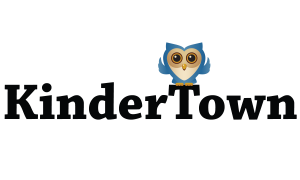Toca Store
Toca Store encompasses all the creativity and complexity of play that Toca Boca is becoming known for.
Toca Store triggers your child’s imagination and inspires role-playing. This app takes advantage of your child’s natural exploration of everyday life to help them to develop social and mathematical skills.

Toca Store provides a wonderful opportunity to discuss money and your family values. Your child’s job is to run a store acting as either the storekeeper or shopper. Your child will learn about making choices, counting and money. The storekeepers job is to stock the shelves, tend the register and set prices. The shopper gets to shop with a bag full of coins. We recommend using it with two children but it easily engages one child playing both roles. It’s really fun for you to play along or to use when a friend comes over.
Several of the children we tested this app with quickly started negotiating and discussing the value of the products while deciding if it was worth paying the storekeepers prices. They were also thinking about how much they really wanted the item. It was interesting and I must tell you I had difficulty keeping a straight face.
Activity 1: Mega Game Board
Enlarge your favorite board games with these simple tips! Life-sized fun that the whole family can create and play together.
What You’ll Need:
• Small cardboard boxes.
• Construction paper.
• Mural paper.
• Tape.
• Markers.
This is not a simple pick up and play project, but one that will create hours of joy! Pull out a favorite board game. Lay out all the pieces and brainstorm how to recreate the game using the objects listed above.
Tape the mural paper down on a flat surface to make the perfect game board. Cardboard boxes can be transformed with construction paper to make life-sized dice. Small toys your child has can make fun game pieces.
Feeling really creative? Make your own game by creating “chance” cards. Cut out rectangles of construction paper. Write out favorable and negative things that are meaningful to your child with a reward or consequence for each. Ideas: “Helping walk the dog. Move ahead 2 spaces”, “Didn’t do your homework. Go back 2 spaces”. Add in “tasks” cards for even more fun! Ideas: “Give everyone in the room a hug. Move ahead 1 space for every hug”, “Tell a funny joke. Move ahead 3 spaces”.
Activity 2: Build a Fort
I read an article from Scholastic titled: Why All Kids Should Build Forts. As an adult who still loves fort building, it seemed like the perfect article to share.
All you need are some blankets and a designated spot in the house for safe building. Chairs, couches, pillows, beds, tables…the fun is endless! When it looks like the fort is almost complete drop off some flashlights, books, toys, or a snack and lots of praise for all the hard work your children just did.






